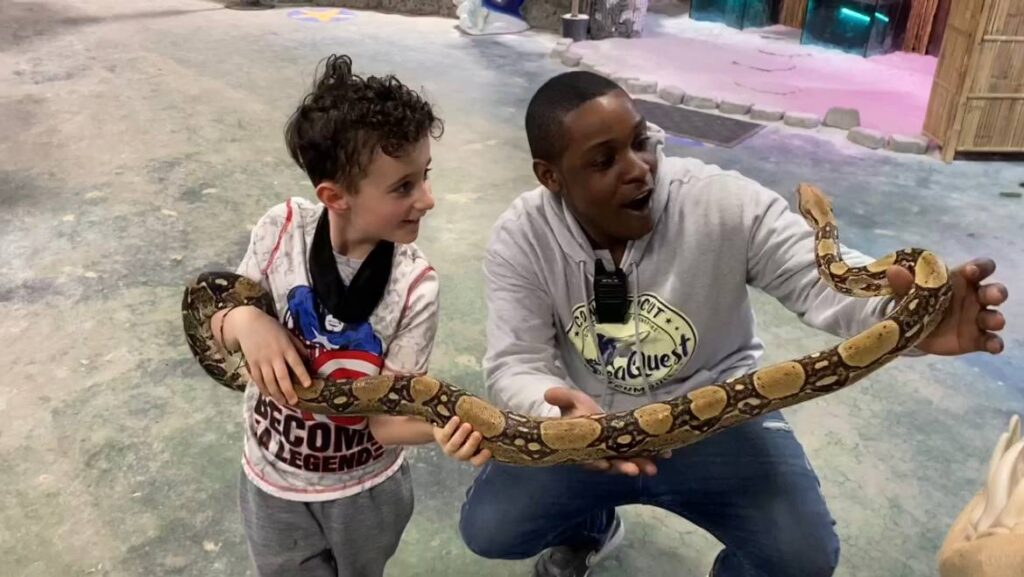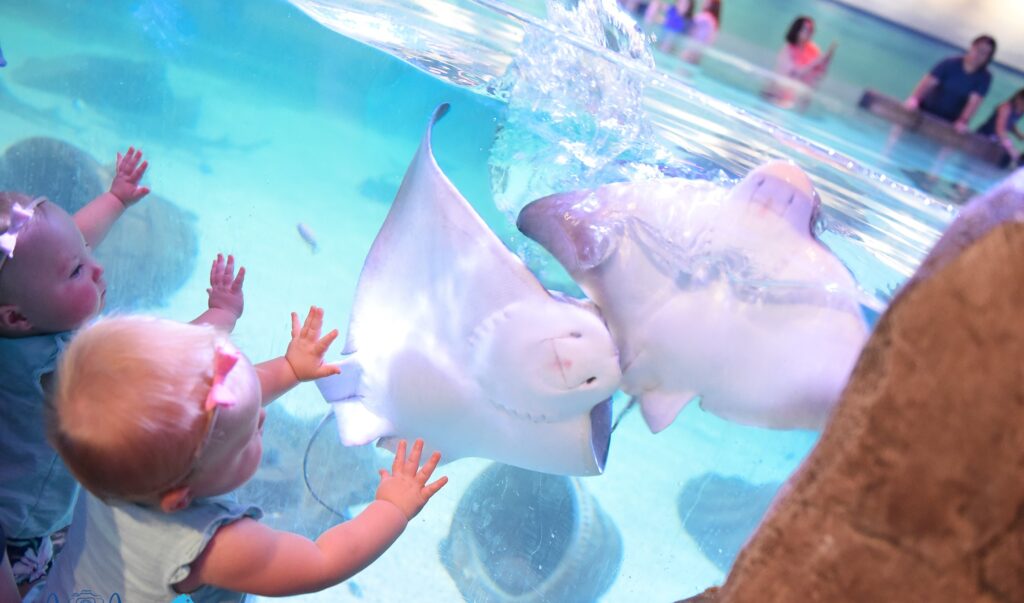SeaQuest’s Guide to Porcupines
Share it on:

One of the most easily identifiable animals, the porcupine is such an intriguing and unique creature in the world! Some people have come across them out in nature or maybe had a dog come home with a nose full of quills. But there’s much more to learn about these elusive mammals, as they are one of nature’s little wonders. Here’s a quick guide to porcupines and tips on what to do if you come across one in the wild!
What is a Porcupine
Originating from the Rodentia order, the actual name of the porcupine comes from the French word “Porcespin,” which translates to quill pig. Porcupines can be found in habitats on almost every continent except Antarctica. There are over 50 different species of porcupine, each sharing a few general appearance characteristics. Most porcupines have robust bodies and small heads. Each has quills embedded into their skin or hair, which they use to defend themselves from danger or predators.
Most porcupines can grow to be between 25 and 40 inches long, which includes their tail. They generally weigh between 10 and 40 pounds. Males and females usually grow to a similar size. Some species have hairless soles on their feet, which makes them great at climbing! All porcupines are nocturnal and can adapt well to their surroundings, but they tend to be solitary animals and spend most of their time alone. They have been known to gather in groups during colder seasons or mating. On average, porcupines usually live between 5-7 years, but some have been known to reach 20 years in captivity.
Did You Know? A group of porcupines is called a prickle and baby porcupines are called porcupettes.
Are Porcupines Dangerous?
Despite their fierce-looking exterior, porcupines are not too dangerous. They are pretty gentle and docile creatures unless provoked. Many people think that porcupines can shoot their quills and that their quills are poisonous. However, the quills of a porcupine are not toxic. They can be extremely painful and cause injuries.
Different Kinds of Porcupines
In their class suborder, porcupines are always divided into two types, determined by the region where they are found. Scientists have grouped them as Old World and New World porcupines.
Old World Porcupines
With the scientific name Hystricidae, Old World porcupines live in Europe, Africa, and Asia. They are known for their back quills that stand up into a crest, much like a mohawk. Each quill is marked with black and white bands. Some of their quills can reach up to 20 inches long. Because of the long quills, when a porcupine feels threatened, they can raise their long quills to give the appearance of being bigger than they are. At the base of their tail are more blunt, hollow quills. The porcupine will rattle their tail to warn potential predators. The porcupine may try to charge backward into the predator if the rattle noise doesn’t work. They also are known to stamp their feet, growl, and grunt to scare off predators
Some examples of species in the Old World group are:
- North African crested porcupine
- African brush-tailed porcupine
- Indian crested porcupine
- Long-tailed porcupine
New World Porcupines
Scientific name Erethizontidae, New World porcupines are found mainly in North, Central, and South America. Their quills are generally much smaller, reaching about 4 in length. These quills are unique in that at the end of each quill has a small barb, much like a tiny fish hook. These hooks snag the flesh, which keeps the quill stuck in the predator’s skin. These quills are almost impossible to dislodge without human tools to remove them. When New World porcupines feel threatened, they simply erect quills that stick out in various directions, like a pincushion. They’ll stand still in a defensive pose or will charge the enemy. New World porcupines are also known to chatter their teeth to sound fierce in order to scare off predators.
Some examples of species in the New World group are:
- Canadian porcupine
- Mexican hairy dwarf porcupine
- North American porcupine
- Brazilian porcupine
What Do Porcupines Eat?
Most species of porcupine have a great sense of smell, which helps them find food. They are mostly herbivores and have sharp, chisel-like front teeth. Old World porcupines eat bark, roots, fruits, and berries. They’re also known to eat crops such as potatoes, pumpkins, and melons.
New World porcupines eat pine needles, stems, leaves, berries, meadow grass, seeds, flowers, nuts, aquatic vegetation, and fruit. The North American porcupine is infamously known for stripping bark from trees for food, which then kills the tree.
What Should You Do if You Encounter a Porcupine?
It’s recommended to avoid the animal as best as possible. Keep your distance and respect their space. Again, porcupines cannot shoot or throw their quills at aggressors. However, it’s harder to have your household pet steer clear when their animal instincts kick in. When your dog picks up a wild animal scent, they’ll want to seek it out and find it. And that doesn’t always end well if your dog meets a porcupine. Dogs have been known to get a face full of quills. The quills dig into the skin and under the tissue. They can get into your dog’s ears, eyes, and joints. This can cause pain and physical trauma in your dog.
If your dog has had an encounter with a porcupine and has been quilled, here are the do’s and don’t on what to do:
- DO NOT – Try to remove the quills yourself. Remember, your dog is most likely in a lot of pain and will need to be calmed and sedated before having them removed.
- DO NOT – Let your dog paw at their face. Try to keep your dog as calm as possible.
- DO – Take your dog straight to a veterinarian! Try to call ahead and explain the situation to the vet staff. Get your dog in as soon as possible to avoid any infection that could set in.
SeaQuest is committed to protecting our world’s oceans, wildlife, and endangered animals. We focus on how to be proactive in finding solutions. If you’d like to learn more about Porcupines, check out SeaQuest today! You can meet Quilliam, the sweet and friendly African Crested porcupine in our porcupine encounter. Quilliam loves fruit snacks and pets. Stop by any of the following locations: Utah, Las Vegas, Sacramento, Minneapolis, and Lynchburg.




